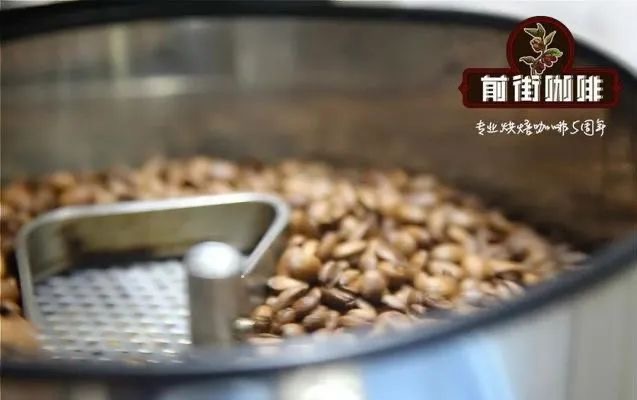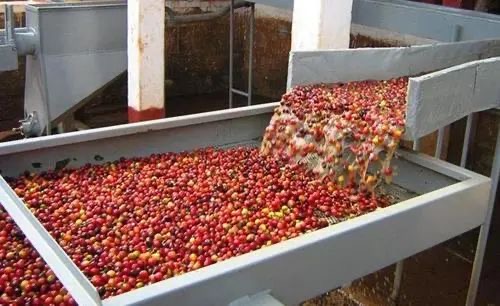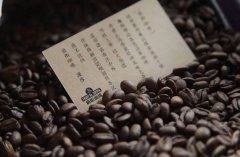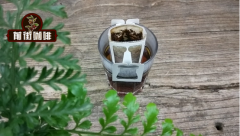The common processing methods of coffee what are the three major processing methods of coffee beans

Explanation of the nouns of raw coffee beans (post-processing method):
Solarization:
The earliest method used by human beings to remove the pulp of berries was mostly used in coffee-producing areas such as East Africa with poor water and electricity facilities. People spread the harvested coffee berries evenly on the ground, dry the flesh by the sun, and then peel off the dried pericarp through tools to obtain raw beans.
The raw beans obtained in this way are not easy to get a good price in early years because of their uneven water content, mottled appearance and poor appearance. In recent years, due to its high temperature and high concentration fermentation for a long time, resulting in a highly recognizable flavor, salted fish has become the darling of boutique coffee circles.

Washing method:
After farmers harvest the coffee berries, they pour them into the pool and bleach them with flowing water. The osmotic pressure causes the berry cells to burst, and then the pulp is brushed off with an electric brush. This is the preferred treatment for wealthy European and American investors, because it requires more start-up capital because of the need for water and electricity, but the mass production capacity of handling berries is also much better than that of tanning. And the color of the raw beans is uniform, the flavor is balanced and elegant, so most of the coffee beans in Central America in the early years were sold at a better price.
In recent years, being defeated by people's preference for individual flavor of solarization, the price of washed beans has gradually lost its competitiveness.
Honey treatment:
The rise of boutique coffee has led to soaring prices of sun beans in East Africa, and traditionally washing farms in Central America have developed weapons against it. The early practice is to wash the berries, reduce the brushing process to retain some pulp on the beans, and then take it to the sun. In recent years, there is also the practice of mechanical direct removal of part of the flesh and then the sun without washing. In this way, the flavor of raw beans is sweeter than that of washing, with the flavor of dried fruit fermentation, but not as wild as the sun method.
According to the pulp residue, the color produced after the sun is also different, so there are white honey, yellow honey, red honey, black honey and so on. In general, the darker the color, the closer the flavor characteristics to the sun, and the lighter the lighter the closer to the washing method.
Other treatment methods:
As the excellent development and control ability of the "flavor" of the treatment method is in line with the pursuit of today's boutique coffee lovers, attractors invest a lot of resources in the research of the treatment method.
Some of the factors affecting fermentation in the traditional treatment methods are controlled more carefully, some learn from the methodology of other fermented foods, and some operators find a new way to improve the "fermentation environment" and "fermentation medium". In recent years, there have been "anaerobic fermentation treatment", "K72 treatment" … . A variety of novel terms such as high-quality coffee attract the attention of boutique coffee lovers and employees, but it can not help but lead to the controversy of whether excessive artificial intervention in the flavor.
Important Notice :
前街咖啡 FrontStreet Coffee has moved to new addredd:
FrontStreet Coffee Address: 315,Donghua East Road,GuangZhou
Tel:020 38364473
- Prev

What is the difference between coffee, cooked beans, comprehensive beans and single beans? single beans or mixed beans?
Coffee cooked bean noun: single bean / manor bean: roasted cooked bean, if the ingredient comes from a single producing area, it is called by a single treatment method. With the prevalence of boutique coffee in modern times, consumers are no longer satisfied with the so-called "producing areas" for the origin of beans, and people are looking forward to the outstanding performance of the unique planting and treatment methods of the manors (or farms) in the producing areas. So, in the world of boutique coffee
- Next

Coffee leaf rust symptoms robusta coffee bean characteristics what is Arabica
Explanation of the nouns of raw coffee beans (Arabica v.s. Robusta): coffee tree, evergreen tree of Rubiaceae, Rubiaceae has many medicinal plants, such as quinine, Dugan and so on. Most coffee trees on earth are planted in the highlands between the Tropic of Cancer and the Tropic of Cancer, so this area is also known as the "coffee belt". The coffee beans we use to brew coffee are the seeds in the fruit of the coffee tree.
Related
- Beginners will see the "Coffee pull flower" guide!
- What is the difference between ice blog purified milk and ordinary milk coffee?
- Why is the Philippines the largest producer of crops in Liberia?
- For coffee extraction, should the fine powder be retained?
- How does extracted espresso fill pressed powder? How much strength does it take to press the powder?
- How to make jasmine cold extract coffee? Is the jasmine + latte good?
- Will this little toy really make the coffee taste better? How does Lily Drip affect coffee extraction?
- Will the action of slapping the filter cup also affect coffee extraction?
- What's the difference between powder-to-water ratio and powder-to-liquid ratio?
- What is the Ethiopian local species? What does it have to do with Heirloom native species?

